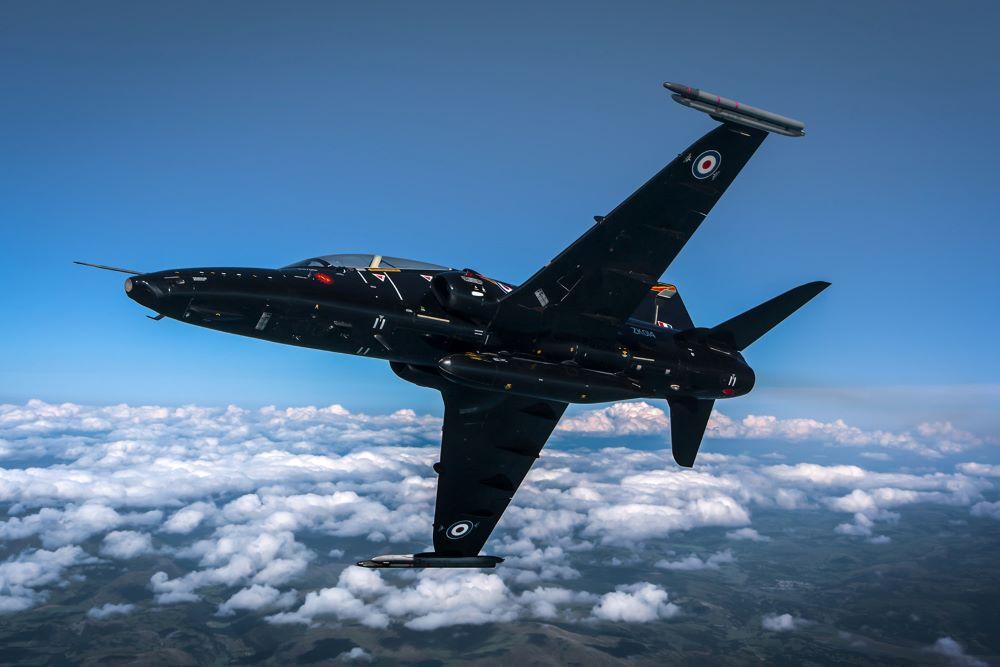
RAF FAIRFORD, UK–The UK Royal Air Force plans to trial augmented reality technology to see if it can be used to speed up the training of fast jet pilots.
The UK defense ministry, along with BAE Systems and U.S. company Red 6, will install the latter company’s Advanced Tactical Augmented Reality Systems (ATARS) onto a BAE Systems Hawk T2 advanced jet trainer later this year to demonstrate the technology. ATARS inserts programmed virtual adversaries into the pilot’s helmet-mounted display for the Hawk pilots to engage, the service and BAE Systems announced during the Royal International Air Tattoo here on July 19.
The UK defense ministry says the technology could help reduce the demand for live assets and means that pilots can achieve more training per flying hour.
The trials will assist the RAF in “assessing and analyzing the interoperability and capability of this new technology,” say officials as the service considers whether augmented reality (AR) should form part of its future flight training strategy. If adopted, the technology could be further developed and updated.
“We are always looking for opportunities that innovative technologies potentially offer to improve our training delivery,” says Commodore Steve Jose, the head of the UK Military Flight Training System Delivery Team at the UK defense materiel agency, Defense Equipment and Support.
“Working collaboratively with industry we were able to deliver this at pace to allow the RAF to investigate this exciting technology to help inform future decisions around fighter pilot training,” Jose adds.
Approval for the trials follows the signing of a memorandum of understanding between BAE Systems and Red 6 at the Interservice/Industry Training, Simulation and Education Conference (I/ITSEC) event in November 2023, looking at offering the Red 6 ATARS technology to the Hawk customer base.
ATARS streams virtually constructed adversaries, wingman and surface threats into the aircraft through the pilots’ helmet-mounted display, allowing training to be done at a fraction of the cost of live training with multiple aircraft. The system works by first precisely calculating the aircraft’s position in space as well as where the pilot’s head is pointed. Aircraft location is generated by the avionics integration system (AIS) which combines GPS positioning with real-time kinetics for additional accuracy if needed. Pilot head-pointing data is derived from the coupled fusion tracking (CFT) system based on a modified version of the magnetic tracking technology used in the U.S. military’s Joint Helmet Mounted Cueing System.
The two companies have carried out 3D scanning and feasibility assessments on the Hawk T2 aircraft at RAF Valley. This digital picture allows engineers to understand how the ATARS system can be integrated into the aircraft. Part of the Hawk integration effort is being funded by the National Security Strategic Investment Fund (NSSIF), the UK government’s corporate venturing arm for dual-use advanced technologies.
“Exploitation of novel technologies is an essential part of ensuring the RAF is able to sustain our combat edge and succeed on operations against a constantly evolving adversary,” says RAF Air Cdre. Rob Caine, the RAF’s head of flying training.





